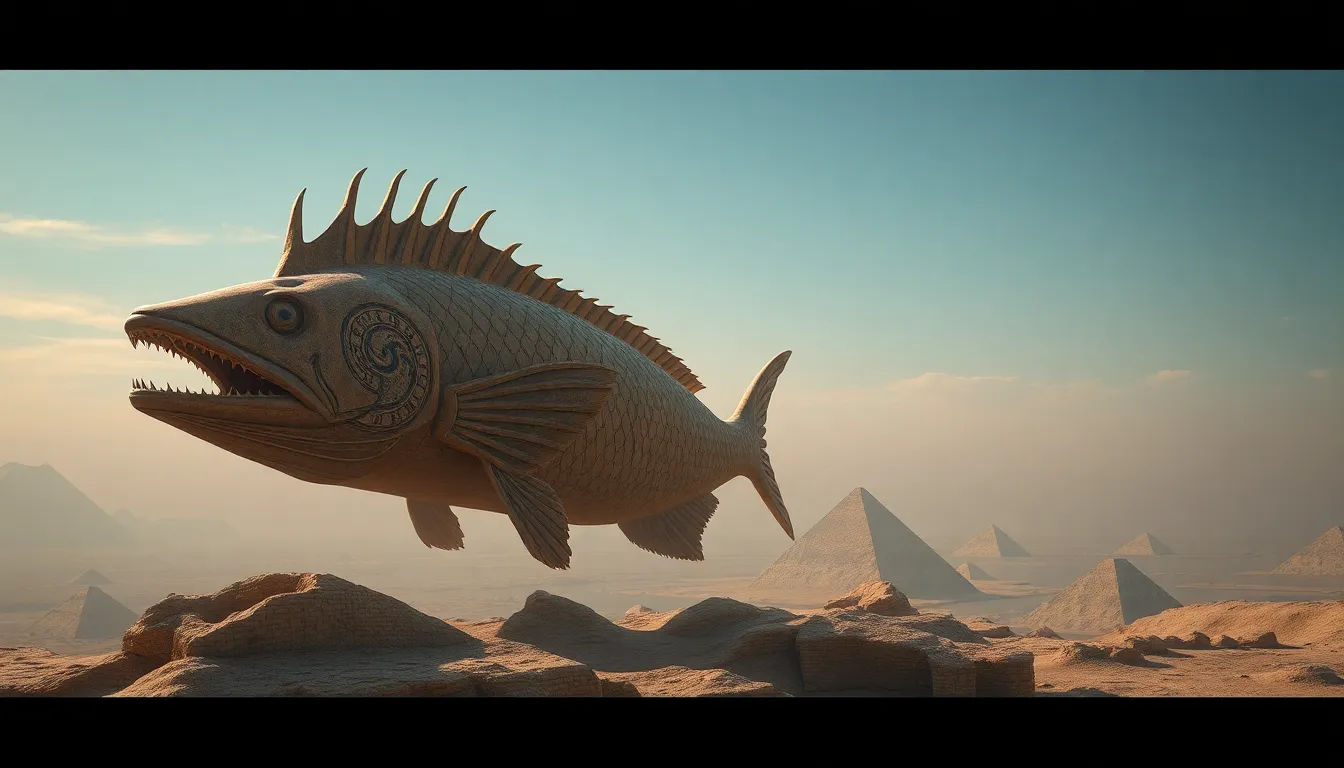The Geography of the Sacred Fish: Myths of the Nile
I. Introduction
The Nile River, often referred to as the lifeblood of ancient Egypt, has played a pivotal role in shaping the culture, economy, and spirituality of the region. This mighty river, which stretches over 6,650 kilometers, is not just a waterway; it is a symbol of life, fertility, and sustenance. Among the many aspects of Egyptian mythology, the concept of sacred fish holds a unique place, representing a deep connection between the people, their environment, and their beliefs.
This article aims to explore the myths surrounding sacred fish in Egyptian mythology, examining their significance within the context of the Nile River’s geography and the cultural identity of ancient Egyptians.
II. The Nile River: Lifeblood of Ancient Egypt
The importance of the Nile River in ancient Egyptian civilization cannot be overstated. It served as the main source of water in an otherwise arid landscape, enabling agriculture to flourish and communities to thrive.
- Agricultural Impact: The annual flooding of the Nile deposited nutrient-rich silt on the banks, creating fertile land that supported crops such as wheat and barley.
- Civilization Development: The river facilitated trade, transportation, and communication between communities, leading to the development of a unified civilization.
Geographically, the Nile is characterized by various features that contribute to its rich ecosystem. Its delta, where the river meets the Mediterranean Sea, is a biodiversity hotspot, home to numerous fish species vital to the local culture.
The Nile also played a significant role in shaping local cultures and religions, often seen as a divine entity that provided for the people. Many deities were associated with the river, emphasizing its centrality in both daily life and spiritual practices.
III. Sacred Fish in Egyptian Mythology
Within the waters of the Nile, several fish species were deemed sacred, each carrying its own symbolism and significance in Egyptian mythology. Some of the key species include:
- Nile Perch: Known for its size and strength, this fish was often associated with the god Osiris, symbolizing resurrection and fertility.
- Catfish: Revered for its unique appearance, the catfish was linked to the goddess Hathor, representing motherhood and nourishment.
These fish were not only vital to the diet of ancient Egyptians but also served as symbols in various myths. For instance, the Nile perch’s association with Osiris highlights the connection between fish and the cycle of life and death.
Moreover, sacred fish often represented deities, reinforcing the belief that the natural world was imbued with divine presence and power.
IV. The Role of Fish in Egyptian Religion and Rituals
Fishing practices in ancient Egypt were deeply intertwined with spiritual beliefs. The act of fishing was often seen as a sacred endeavor, reflecting a relationship with the gods and the natural world.
- Spiritual Significance: Fishermen would often offer prayers before embarking on their journeys, seeking favor from the gods.
- Fish Offerings: Sacred ceremonies frequently involved fish offerings to deities, symbolizing gratitude and reverence.
Myths surrounding the creation and sustenance of fish also played a crucial role in Egyptian beliefs. One popular myth involves the goddess Nut, who is often depicted as the sky, giving birth to fish as a symbol of life emerging from the waters of the Nile.
V. Geographic Distribution of Sacred Fish
The habitats of sacred fish along the Nile River are influenced by its diverse geographic features. The river’s varying landscapes create different environments, each supporting unique fish populations.
- Habitat Variations: The upper Nile, characterized by its rocky terrain, differs significantly from the lush, fertile delta region, impacting the species found in each area.
- Geographic Impact on Mythology: The geographical differences lead to regional variations in the interpretation of fish symbolism and their associated myths.
For example, communities near the delta might emphasize the abundance of fish and their role in sustenance, while those upstream might focus more on the spiritual aspects tied to fishing practices.
VI. The Interplay of Geography and Mythology
The relationship between geography and mythology is evident in how the landscape influenced mythological narratives. The sacred fish of the Nile are often tied to specific geographical features, reinforcing the connection between the environment and cultural identity.
- Mythological Narratives: Many myths emerged from the need to explain natural phenomena observed in the Nile’s environment.
- Case Studies: Specific myths, such as those involving the annual flooding of the Nile, highlight how geography shaped religious beliefs and practices.
For instance, the inundation is often associated with the tears of the goddess Isis, mourning the death of Osiris, intertwining the river’s physical characteristics with profound spiritual meanings.
VII. Modern Perspectives on Ancient Myths
Archaeological findings continue to shed light on the significance of sacred fish in ancient Egyptian culture. Discoveries of fish remains in tombs and temples indicate their importance in religious practices.
- Contemporary Interpretations: Modern scholars often explore the relevance of these ancient myths in today’s society, examining how they inform contemporary cultural identities.
- Preservation of Beliefs: Elements of ancient beliefs surrounding sacred fish persist in modern Egyptian culture, reflecting a continuity of tradition.
For instance, certain fishing practices and beliefs about the spiritual significance of fish are still observed by local communities along the Nile.
VIII. Conclusion
In summary, the sacred fish of the Nile River are a vital component of Egyptian mythology, intricately linked to the geography and cultural identity of ancient Egyptians. Their significance transcends mere sustenance, representing deeper spiritual connections and the interplay between the natural world and divine presence.
The enduring legacy of these myths highlights the importance of the Nile in shaping not just ancient beliefs but also contemporary cultural practices in Egypt. As we continue to explore the rich tapestry of Egyptian mythology, the sacred fish remind us of the profound relationship between geography and mythology in shaping human experience.




